ROYAL
CULTURAL HERITAGE
Royal Coat of Arms
The Royal coat of arms represents the Head of State and is borne only by the Sovereign. The history of the coat of arms of the King of Nepal is not very old, with the most recent royal coat of arms first coming into existence in 1962 A.D.
The design features a royal crown at the top.
The main crest has the royal insignia at the center, consisting of a khadga, the royal arms. The khadga is an ancient ritual sword often seen on Hindu and Buddhist deities, symbolizing the sword of wisdom that cuts through ignorance.
The khadga is placed on a hexagram, the emblem of armed authority. Together, the hexagram and khadga form an independent royal insignia used throughout the Narayanhiti Royal Palace.
The top of the khadga meets two khukuris in satire. The hexagram is circled by a sankha and a gada on its right, and a chakra and padma on the left. “Sri Panch Maharajadhiraj” is written in Devnagari script on a crescent moon over a lotus flower.
On either side of the main crest stands a trishul with a Royal standard flag.
The bottom depicts the three significant landscapes of Nepal: the Himalayas, the hills, and the terai. “Nepal” is written in Devnagari script along the mountains.
The final touch is the Royal motto in Devnagari, which reads, “Bidhya Mai Cha Maha Shakti, Karma Mai Cha Supujan,” meaning “Knowledge is Power. Work is Worship.”

Royal Standard
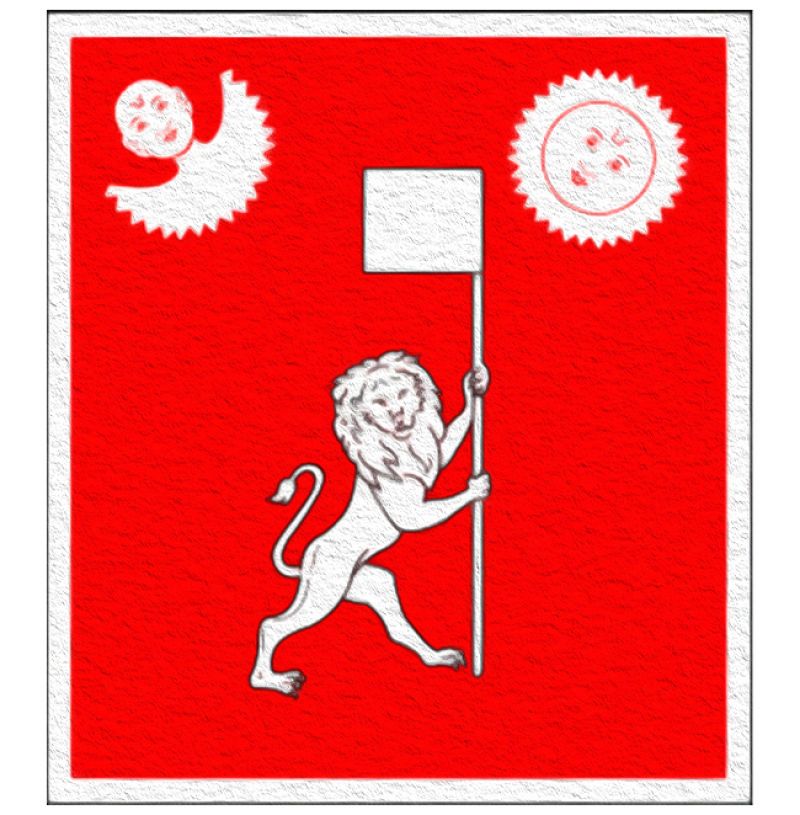
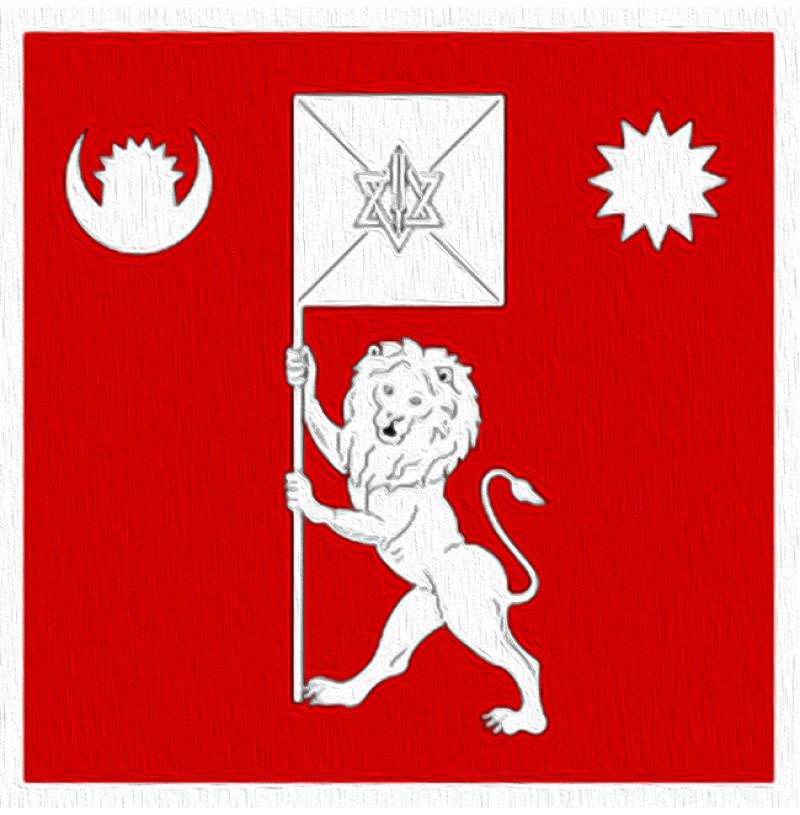
The Royal Standard is a flag which represents the presence of the Sovereign. It is flown when the King is in residence in one of the Royal palaces, and in cars or flights when the King is on official visits at home and abroad.
Throughout history, the Nepali Royal Standard has evolved and taken various forms. The earliest Royal Standard was first recorded in 1928. The rectangular flag stands vertically and is crimson with white borders and charges. The charges included a lion bearing a plain white flag. In the upper left corner, a moon shows with facial features tilted to the left. In the upper right corner, a sun shows with facial features tilted to the right. The lion faces the sun.
Later the standard underwent a slight change. The sun and the moon no longer tilted, the lion faced the moon, and borders turned yellow.
The most recent Nepali Royal Standard in 2001 was an almost square white-bordered crimson flag. It featured the charges in white, a lion bearing a square flag displaying black diagonals and a star with a vertical sword at its center. Both are royal symbols, standing respectively for knowledge and strength. The moon and sun symbols were retained but without the faces.
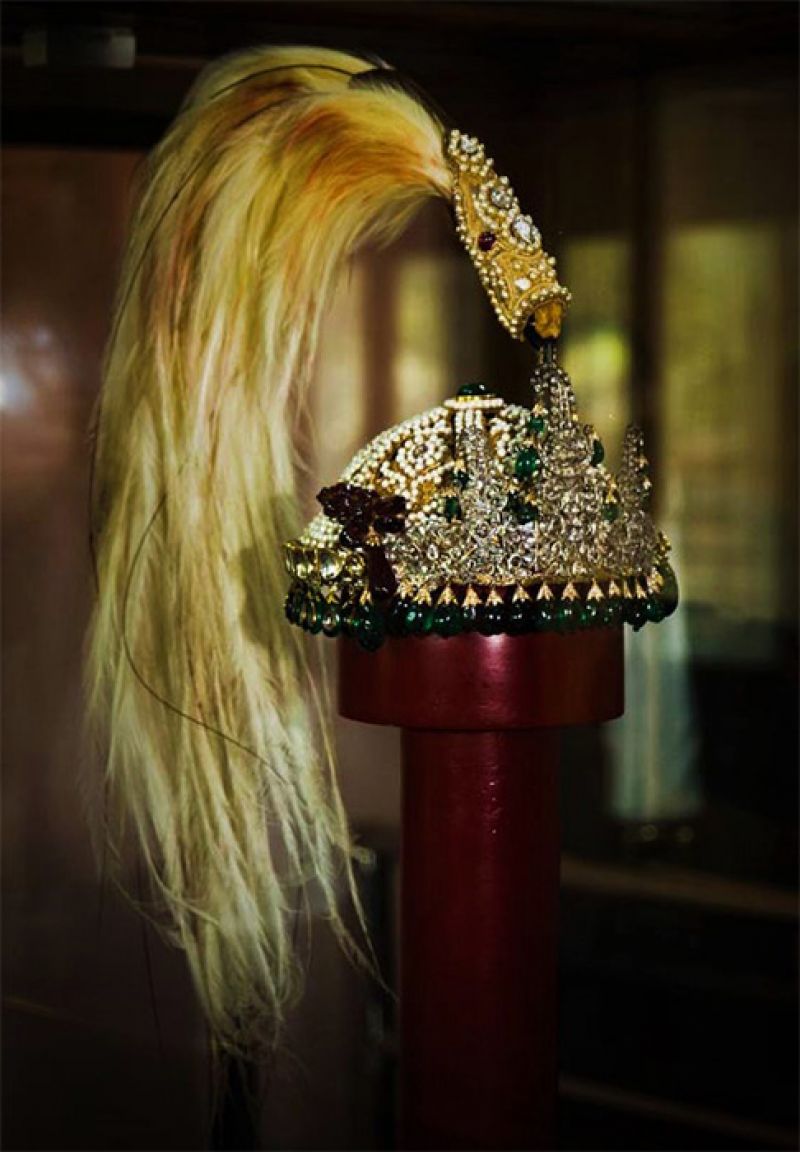
Royal Crown
The King’s crown, the Shreepech, is a heavily jeweled ornament, flaunting over 3,000 precious stones, including 723 diamonds, 2,372 pearls, 47 emeralds and 16 rubies. The top of the crown features a plume of “bird-in-paradise”.
It is ornamented by enormous flattened diamonds about 5/8 of an inch square. It has a bunch of large emeralds, of which the lowest is a gigantic stone of 1¼ inches in length. Towards the back, the emeralds and stones are substituted by flattened diamonds, each hung as a pendant to the large square diamond above.
Although it isn’t clear how far the crown dates back, one of its jewels puts it on a timeline. Among the Crown jewels is a knot of large diamonds which belonged to the late Empress Eugénie of Spain and was sold in 1886.
The Queen’s tiara is a glittering crown, embellished with 943 lotus diamonds. It was first seen on Her Majesty Queen Mother Ratna at His Late Majesty King Mahendra’s coronation in 1956. Since then, the tiara has been used for the crowning ceremony of Nepal’s queens.
It was worn by Her Late Majesty Queen Aishwarya Rajya Laxmi Devi Shah during the coronation of His Late Majesty King Birendra in 1975. Most recently, Her Majesty Queen Komal Rajya Laxmi Devi Shah was seen wearing it for her official portrait.

Royal Sword, Shield & Scepter
The three-fold twisted gold sword with a velvet scabbard is part of the King’s regalia during coronation. It is an important symbol of power and authority, and besides the day of coronation, the Head of State is often seen donning it for official portraits.
The black shield is adorned with 4 golden flowers and a golden crescent moon on top. The shield is no longer part of the King’s regalia and was last seen on His Late Majesty King Rajendra Bikram Shah’s official portrait.
The golden scepter, decorated with navaratna (nine gemstones), is another important element of the royal regalia. It is carried by the King on ceremonial occasions such as the coronation, as a symbol of sovereignty.
Royal Throne
The royal throne of the Shah dynasty dates back to circa 1974 (2030 B.S). At 8 ft in height and 4 ft in breadth, it is made of 600 kg of silver and plated with 233 grams of gold. Ornately decorated, it features a snake with its seven-headed hood raised over the seat. This artistically represents the King on the throne as Lord Vishnu himself.
The throne is used for ceremonial purposes such as the Decoration ceremony to the members of the Royal family and announcement of the Crown Prince. The same throne was used for the coronation ceremony of His Late Majesty King Mahendra Bir Bikram Shah Dev.
The royal throne is part of a collection of three different thrones. Each one of them artistic yet different from one another, they all feature the seven-headed snake. The thrones are used for different ceremonies and functions, however most have been seen used interchangeably for coronation ceremonies throughout the years.
Royal Decorations and Honors
As with every nation, Nepal too has a tradition of her own of showing appreciation of exceptional abilities displayed or meritorious services rendered. There are special decorations and honors that are sanctioned by the royal family of Nepal to honor distinctive individuals at home and abroad, within the royal family and foreign royalties for their contribution and achievements.
In Nepal, the process of modernizing the honors was started during the reign of His Majesty King Prithvi Bir Bikram Shah Dev and was further improved during the reign of His Majesty King Tribhuvan Bir Bikram Shah Dev. The honors were invested by His Majesty in the midst of an investiture. His Majesty The King is sovereign of all orders of the Kingdom of Nepal.
Below are some of the key Orders during the Kingdom of Nepal. There are also 20 Decorations and 29 Medals.
Order of Mahendra-Mala
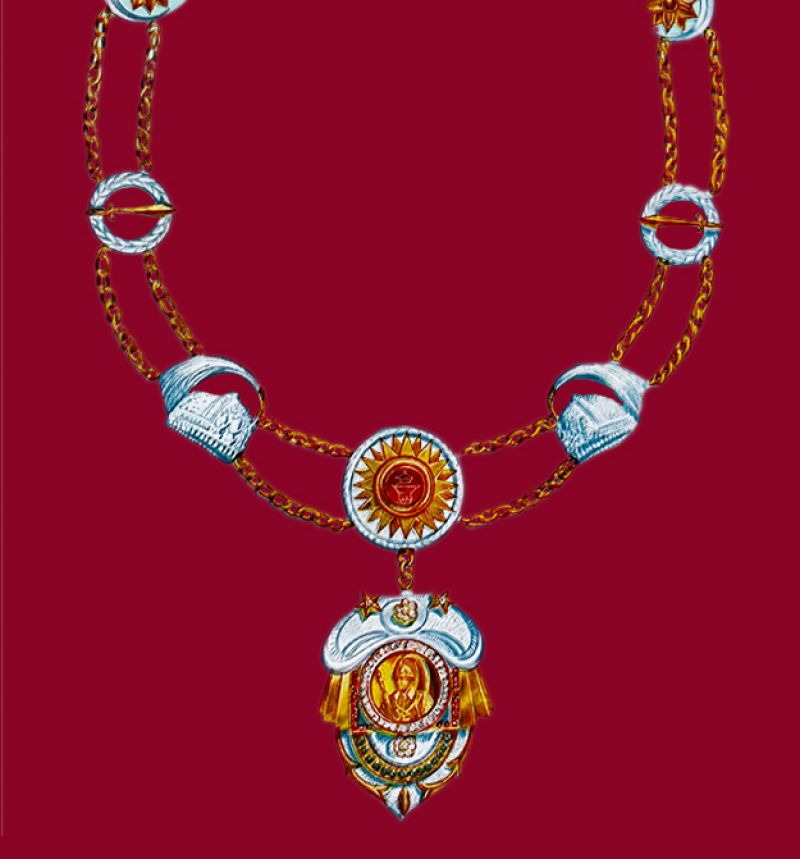
Nepal Pratapa Bhaskara
- The Sovereign
- The GrandMaster, and
- The regular Nepal Pratapa Bhaskara. It is conferred on the Royal family and foreign Kings and Queens.
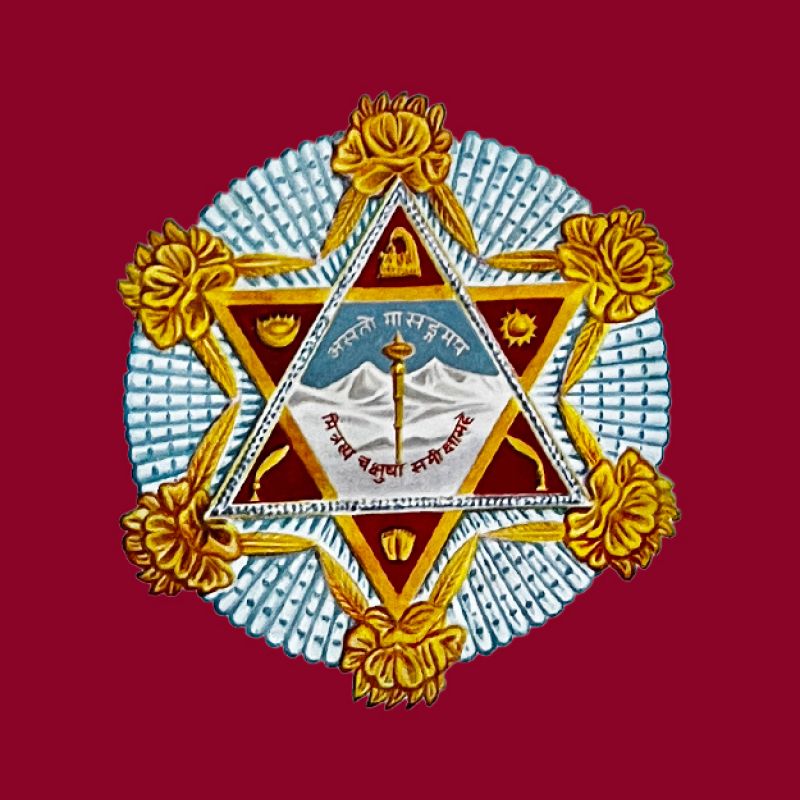
Ojaswi Rajanya
With the motto of “Good breeds good and evil breeds evil”, the Order was instituted by His Late Majesty King Tribhuvan Bir Bikram Shah Dev on 14 May 1934. The insignia includes a star, a badge, a broad ribbon, a collar and a mantle. The Order has three titles:
- The Sovereign
- The GrandMaster, and
- The regular Ojaswi Rajanya. It is bestowed on Nepali and Foreign royalties, and heads of states.
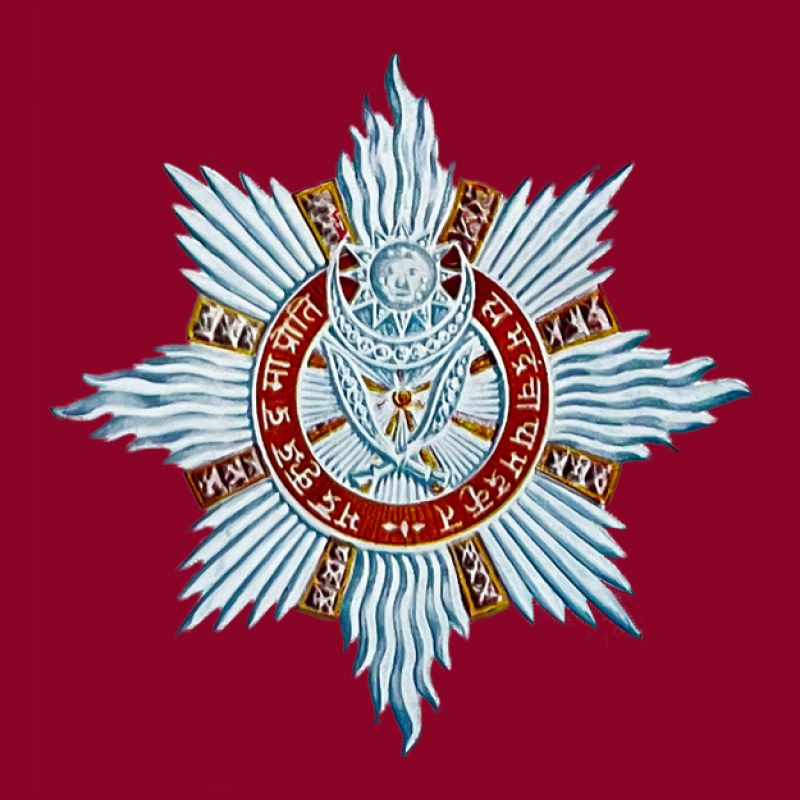
Nepal Shreepada

Nepal Tara

Tri Shakti Patta
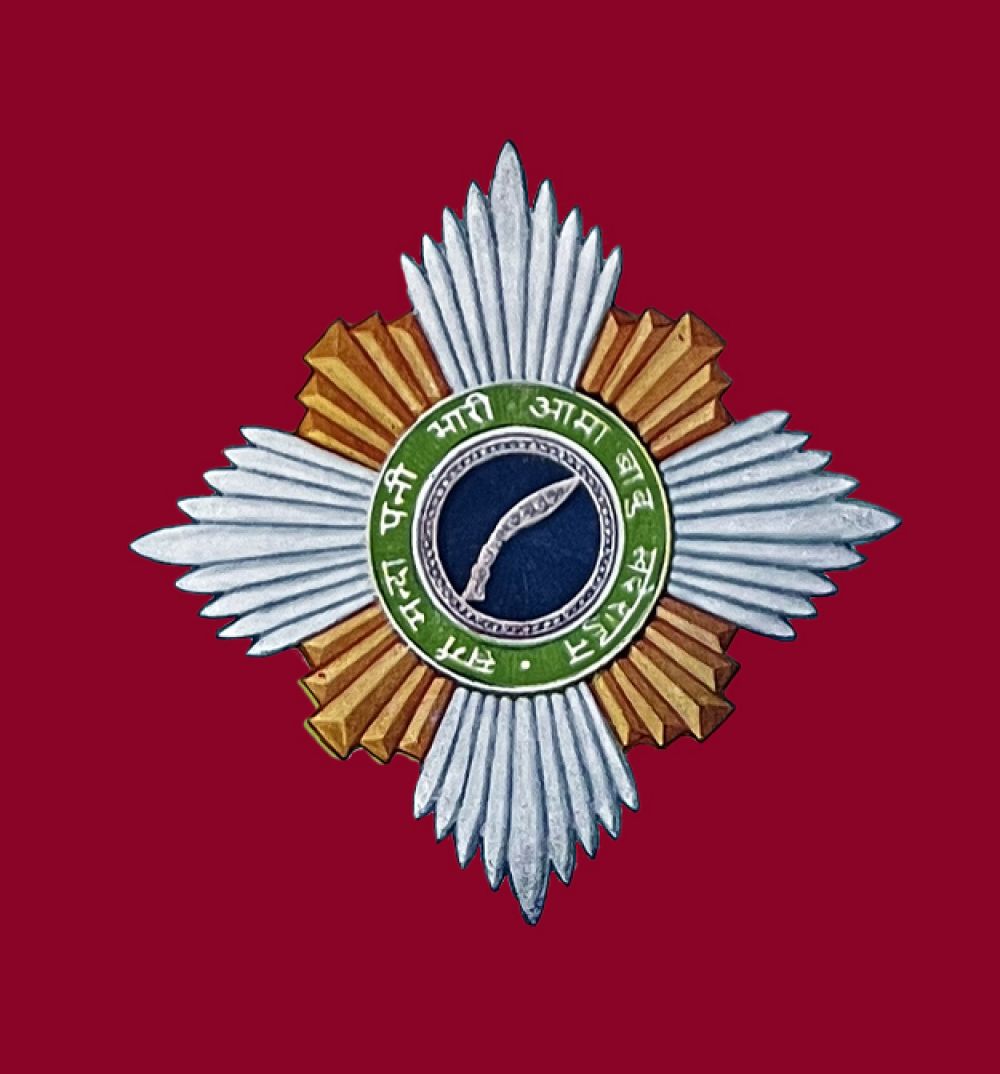
Om Rama Patta

Gorkha Dakshin Bahu
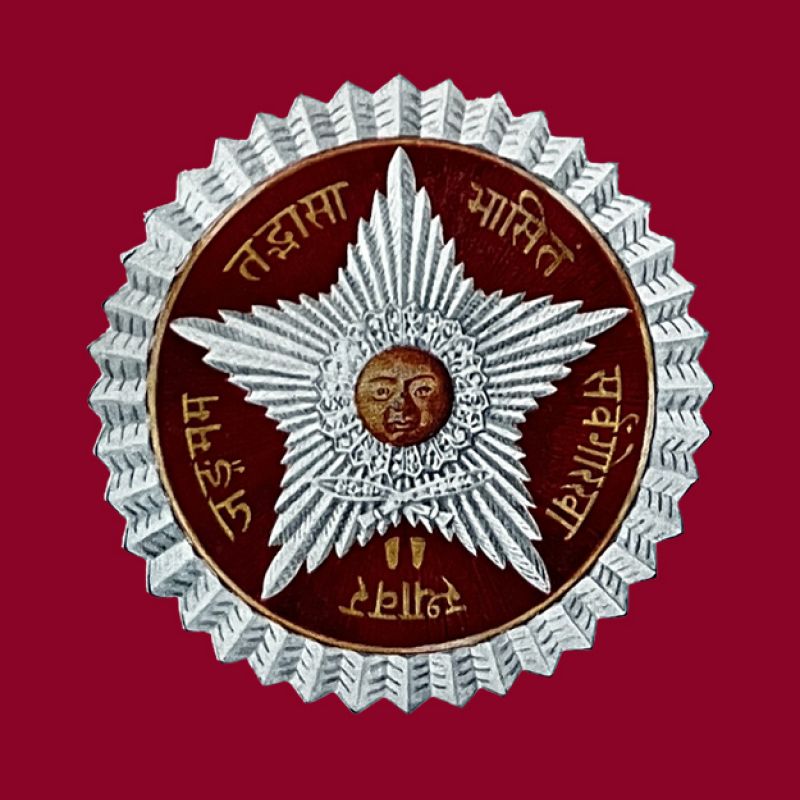
National Flag
In a sea of waving flags, the national flag of Nepal would be the easiest to spot, given its uniqueness in size, shape and color. The red-white-and-crimson flag designed in a united double-pennon is a source of great pride to all Nepalis, a tether that binds Nepalis everywhere.
The only non-quadrangular national flag in the world, the Olympics has made an exception for Nepal specifically when it comes to the standard size requirement.
Many historians have dated the Nepali flag to the unification of Nepal. The Kingdom of Gorkha like many Hindu states in the ancient time used triangular flags that unfurled easily in the lightest of breeze. When His Majesty the Great King Prithvi Narayan Shah had unified the smaller states and principalities, the double-pennon red flag came to existence, flaunting the moon on the top triangle and the sun on the bottom.
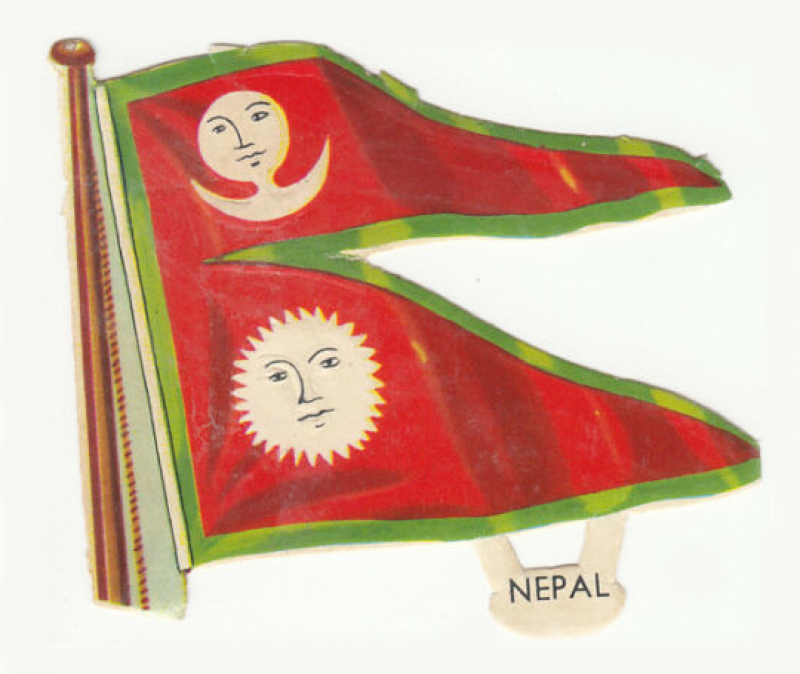
The blue in the modern day flag of Nepal was seen in 1930. The moon and the sun had a human face in this version of the flag.
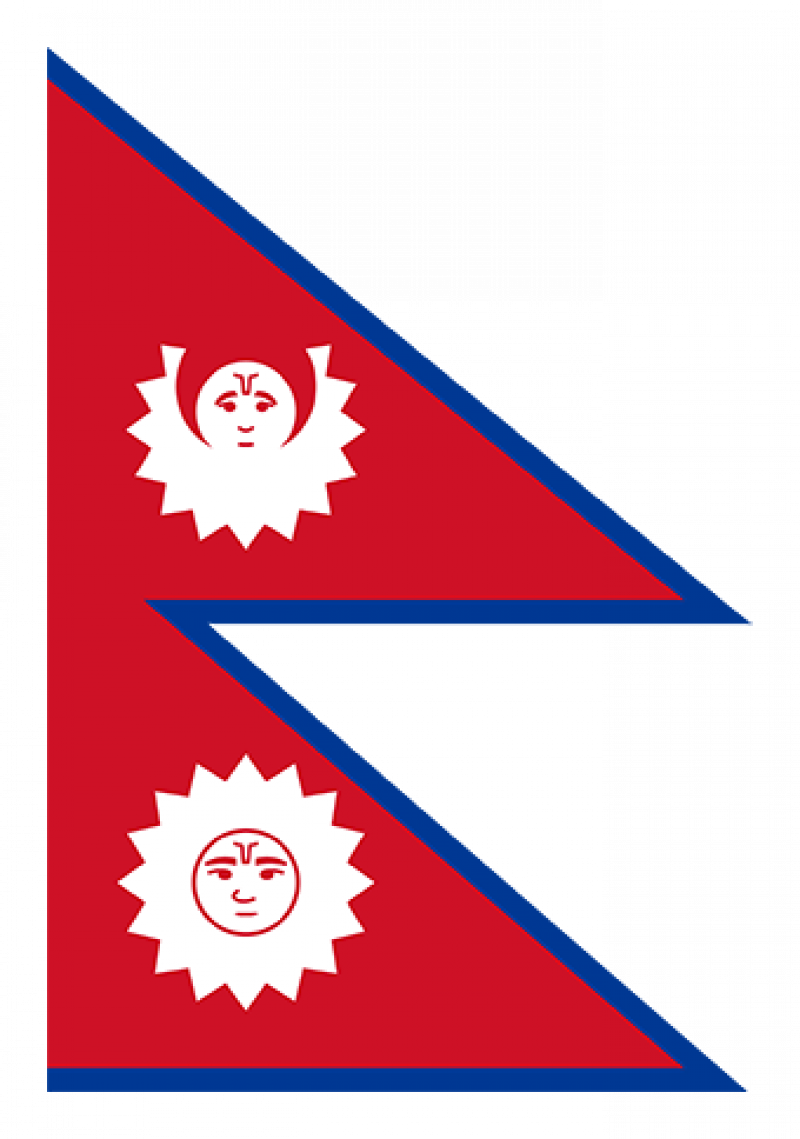

What it all means
Many assume the two triangles in the flag to be representations of the Himalayas. However, a more logical explanation for the shape of the flag is more historical. Nepal maintained its ancient tradition of triangular flags, which was historically standard in all states in South Asia, rather than adopting rectangular or square flags of the West.
The crimson red is representative of valor and bravery that Nepalis are known for. It is also a symbol of victory.
The blue in the border means peace and wisdom, associated with Gautam Buddha. The upper triangle has a white crescent moon and the lower has a sun. In the upper segment is a white moon emitting eight rays, with a crescent attached below; in the bottom segment appears a white, stylized sun with 12 rays. These two celestials in white are a hope that the country may have the same longevity as the sun and moon.
National Anthem
In Nepali
श्री ५ सरकार महाराजाधिराजको सदा रहोस् उन्नति
राखुन् चिरायु ईशले
प्रजा फैलियोस्, पुकारौँ जय प्रेमले
हामी नेपाली साराले
English translation
You, the gallant Nepalese,
Shri Pānch Māhārājādhirāja, our glorious ruler,
May he live for many years to come,
And may the number of his subjects increase,
Let every Nepalese sing this with love.